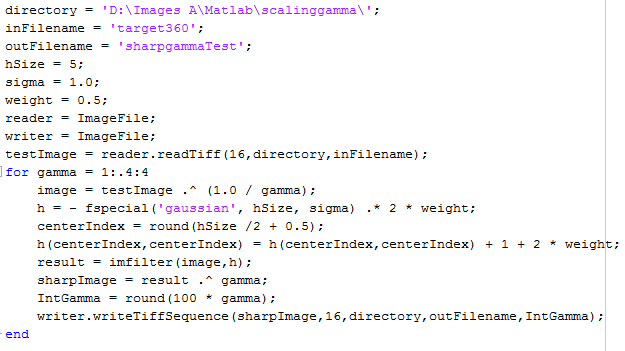I'll be doing another post on the Lr3-->Lr4 print sharpening change. Foreshadowing: it wasn't a change to the sharpening algorithm per se.
I was on a panel on raw processing about a year ago, and so was Eric Chan. At the break, I congratulated him on the big improvements in resizing in Lightroom 4. He said that the algorithms were similar; the big change was that, rather than doing the calcs in the standard Lr working space, which has a gamma of one, they were doing the resizing in a gamma encoded space which is more perceptually uniform. We didn't discuss the gamma, but it's probably either the ProPhotoRGB gamma of 1.8, or 2.2.
That's what I was going to report to you all. But, me being me, I had to do some testing first. I wrote a little Matlab script to upres a test image by 80% at gammas from 1.0 to 3.8 using bicubic interpolation:

When I ran it, I did see some differences. But they were very subtle; nothing like the differences between Lr 3 resampling and Lr 4 resampling.
I scratched my head. Then I thought that there's usually sharpening associated with up-resing. So I modified my script to do unsharp masking at the same gamma set:

Now there was a big difference, with the images that were sharpened at higher gammas being crisper. This could be a good thing or a bad thing, depending on what effects you're trying to achieve.
Lessons:
1) although it's a weak effect, people comparing resizing algorithms should probably take pains to make sure they do all their resizings at the same gamma, and should report that gamma when they report the results.
2) people comparing sharpening algorithms should
definitely take pains to make sure they do all their sharpening at the same gamma, and should report that gamma when they report the results.
I'll have images up on my blog in a few days -- I've got a backlog.
Jim